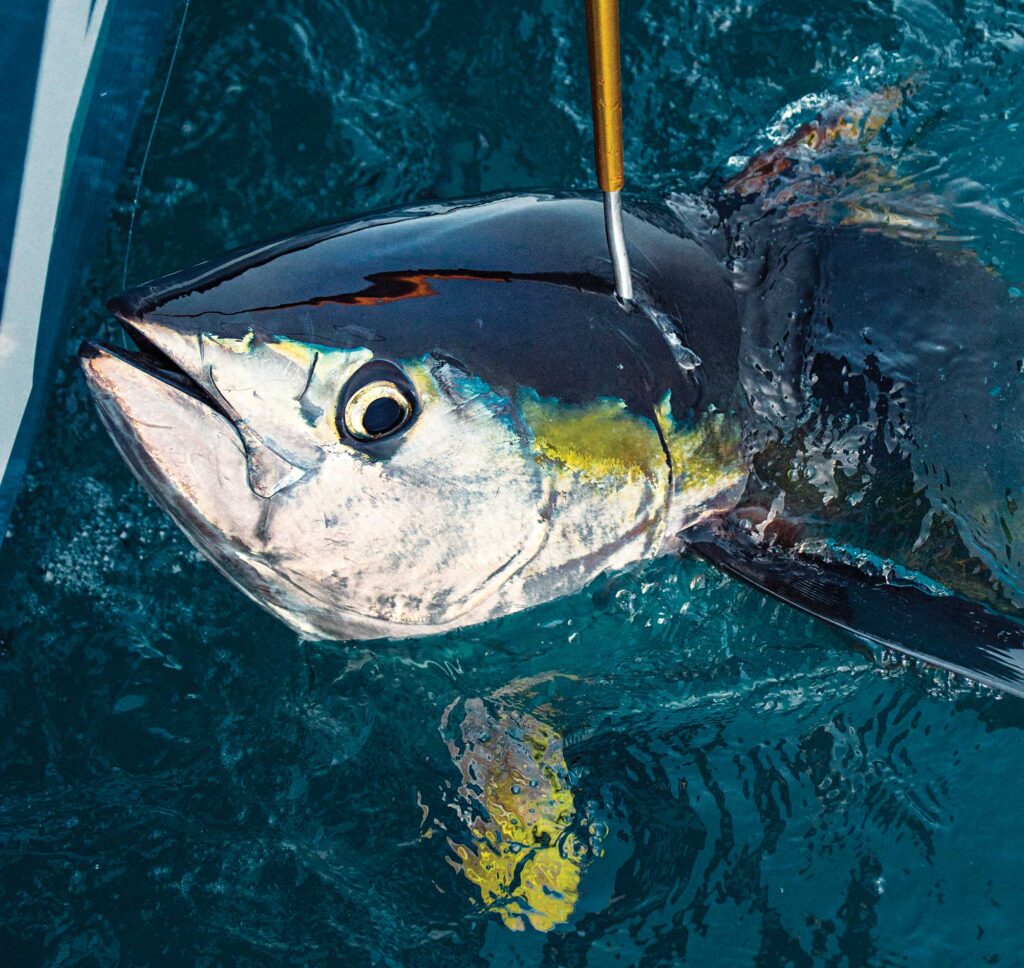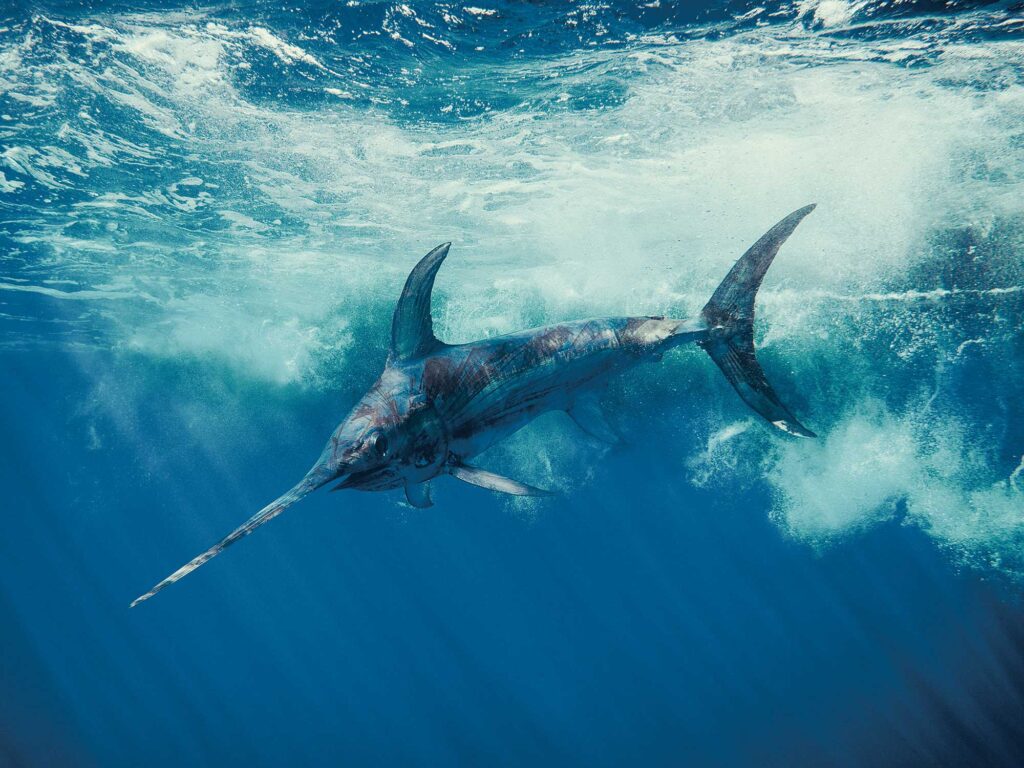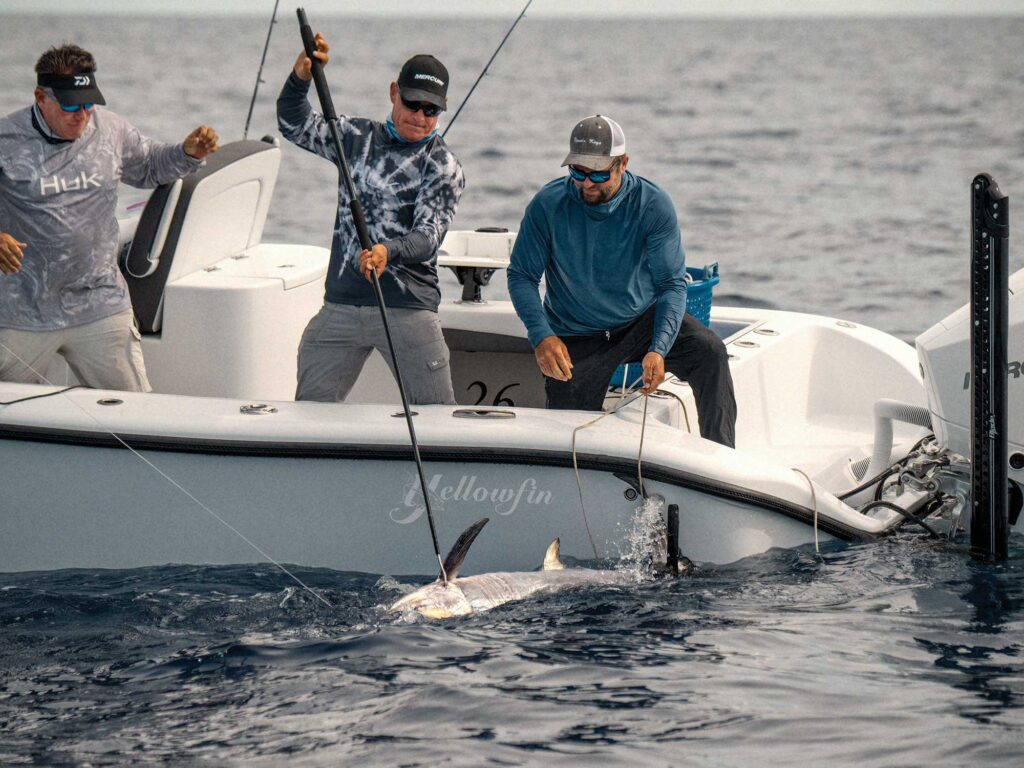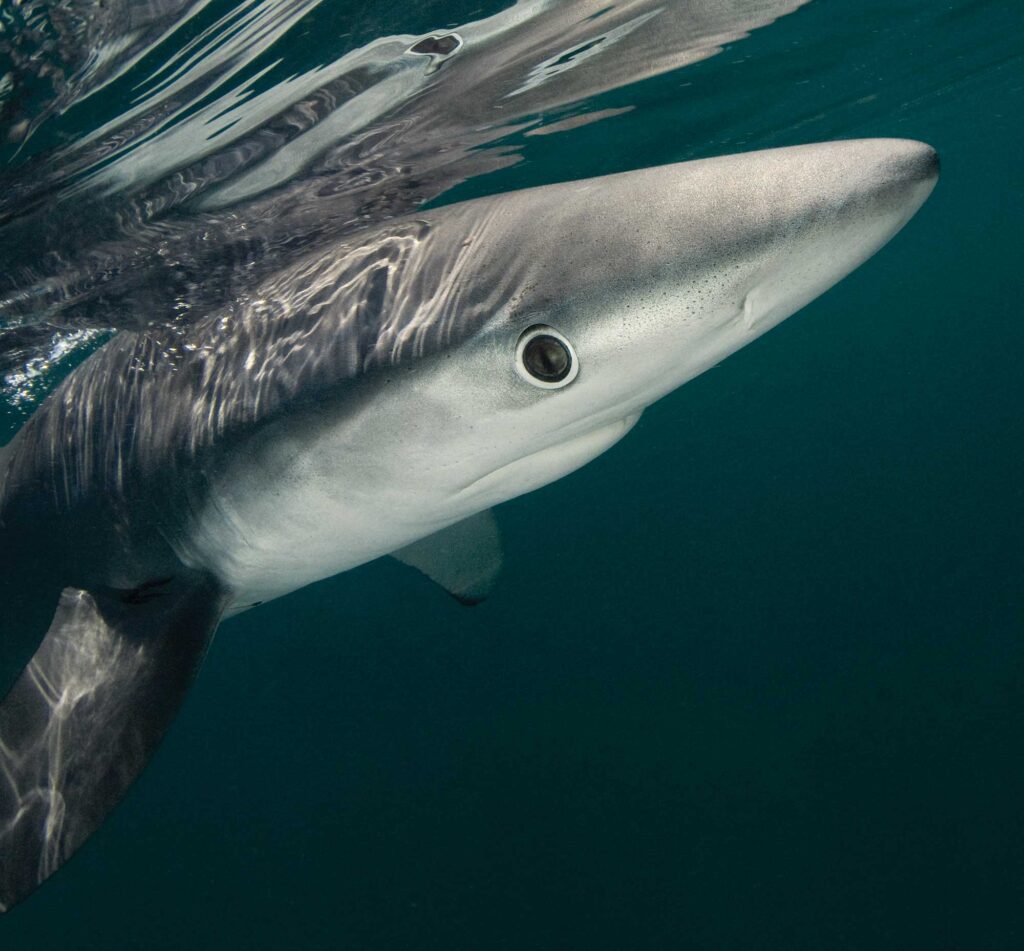Four Fisheries to Target Big Game This Winter
 Destin deployed the first legal fish aggregating devices (FADs) in continental US waters—a jackpot for anglers targeting yellowfins and other pelagics.
Jason Stemple
Destin deployed the first legal fish aggregating devices (FADs) in continental US waters—a jackpot for anglers targeting yellowfins and other pelagics.
Jason Stemple
Even as the days grow shorter and the weather colder, these four US fisheries offer shots at classic big game: yellowfins off Destin, swords off Miami, bluefins off Oregon Inlet, and blue sharks off San Diego. In each, structure plays a critical role in targeting the big fish.
Yellowfins and Pelagics at the Destin FADsIt’s not often that offshore structure gets created before our eyes, but that’s exactly what they’ve done in the waters off Florida’s Panhandle. Visit Destin-Fort Walton Beach, the tourist development council, made history when it deployed the first legal fish aggregating devices (FADs) in continental US waters—eight FADs around DeSoto Canyon. Placed in 2020, those FADs have been a big success in many ways.
Four FADs were placed on the east side of DeSoto Canyon, and four on the west side. The closest is 60 miles from Destin’s East Pass, and the farthest is 80 miles from the Pass. After four years of studying them, Alex Fogg, the natural resources chief, and his colleagues at Visit Destin-Fort Walton Beach have recently improved the FADs.
“We’ve found after deployment that the chamber buoys didn’t perform as well as the Japanese-style FADs, and over the summer we replaced all the chamber buoys with new Japanese-style FADs,” Fogg says.
In the fall and winter, you’ll get the chance at yellowfins, wahoo and other species at the FADs. “The white marlin bite is fantastic out at the canyon in the fall. The best wahoo fishing we’ve ever had has been late November, early December, and it was incredible,” Fogg says. “We’ve caught every pelagic species you can think of at the FADs.”
“We get some of the best fishing of the year at the FADs into January,” says Capt. Adam Peeples of One Shot Charters out of Destin. “We live-bait-troll for yellowfin, and chunking is productive, and we always pick up some rainbow runners for sushi. The FADs have created ecosystems for the fish and for the fishermen.”
Fogg and his colleagues are also working with universities and government agencies to provide research opportunities that were never available before the introduction of the FADs. The project’s success sets a precedent for FADs in other US waters.
Read Next: Winter Bluefin Action off North Carolina
 Temperatures are cold. The weather is unpredictable. But species such as swordfish bite all winter if you can get offshore safely.
Kevin Dodge
Swordfish on Deep Bottom Structure
Temperatures are cold. The weather is unpredictable. But species such as swordfish bite all winter if you can get offshore safely.
Kevin Dodge
Swordfish on Deep Bottom Structure
Since 2006, Capt. Dean Panos, of Miami, has marked every swordfish bite on his fish finder. When CMOR maps came out about five years ago, showing detailed bottom contours with bathymetric mapping, Panos loaded the program on his finder, and every one of those swordfish bites turned out to be at a pronounced bit of bottom structure down deep—way down deep.
“Every one of those bites is in front of a hole, in the hole, by a mound off the bottom, all very near the structure itself. Down there, the bottom is like a moonscape, with craters, mounds and ravines.”
Off Miami, Panos likes to fish those swordfish grounds between 1,200 and 1,600 feet deep, about 18 miles offshore. Closer to Key Biscayne, the grounds are about 16 miles offshore.
“Sometimes you’ll pull up a fish and its bill will still have mud on it from rooting around on the bottom,” Panos says.
The bottom structure determines Panos’ ideal drift, but surface conditions control the drift’s direction and speed, so he must choose his locations wisely. Off the coast at Haulover, the drop-off runs fairly north and south, and Panos can stay in that drift a good long time for 10 to 15 miles. He motors into the Gulf Stream to slow his speed and keep his bait as straight up and down as possible. Using 10 pounds of lead on the terminal rig, 65- to 80-pound braid, he’s able to cut the Gulf Stream’s 4-knot current down to about 1.5 to 2 knots so he has a longer drift over the targeted grounds. Farther south, near Fowey Light, the grounds line up southwest to northeast, and if that’s the direction of the drift due to surface and wind conditions, that’s where he’ll fish.
 Florida anglers target swordies starting in November.
Jason Stemple
Florida anglers target swordies starting in November.
Jason Stemple
Late fall and winter are the best times of the year for big swordfish off Miami.
“Over the years, the peak season seems to have shifted a little bit later. Now it’s from November through February. We can expect a couple of bites a day, hopefully landing one or two,” Panos says.
“You have to monitor the weather. Any wind direction from the north can make the Gulf Stream rougher. But if you can find a cold front that’s not so strong, it’s great swordfishing. That slows your drift way down with the wind helping you.”
Gulf Stream Bluefins Off Oregon InletWestern Atlantic bluefin tuna are back big time, and the rebound in their stocks is well-documented by fisheries managers and Eastern Seaboard captains.
“Bluefin are everywhere,” says Oregon Inlet’s Capt. Greg Mayer of Fishin’ Frenzy. Some might recognize his name as one of the captains on the Wicked Tuna: Oregon Inlet TV series a few years back. “We’re seeing more and more bluefin every year,” he says. “In the last couple of years, we’re seeing even more young fish with the giant fish, so that’s a pretty good sign for the future.”
The Gulf Stream’s warm-water western wall, flowing north and gathering sargassum, flotsam and forage fish, makes a surface-structure boundary where Mayer and other captains often find the bluefins in winter.
“Here, it’s all about water temperature,” Mayer says. “We’ll catch them out at 500 fathoms on the Gulf Stream edge, generally. These fish move around. Sometimes we’ll find them up on the bottom, inside of 100 fathoms. We’ll also get them down by Hatteras, on the shoals. It also has to do with where the big schools of bait like bluefish and croakers are for them to eat. I think the bluefin come in to feed at night in the hot tide, and then we intercept them in the morning when they’re headed out to digest.”
The bluefins hang around those waters for months in winter. January through March is the season.
“It’s all trolling because the fish are moving all the time,” Mayer says. “They’ll move 20 miles overnight.”
The trophy category for the giant bluefins usually only lasts a couple of days before its quota gets filled. However, as long as the season is open, a charter client or properly licensed private angler can keep a bluefin that measures under 73 inches.
Bluefin, like other big-game fishing, involves a measured understanding of risk and reward, but it’s nice when the odds are tilted in your favor with the big fish. As Mayer says, “There aren’t many places in the world where you’re almost guaranteed to catch an 800-pound fish any day of the winter if you can get out there.”
 Blue sharks show in January off San Diego.
Tom Stack
Sharks on Fly and Light Tackle Off San Diego
Blue sharks show in January off San Diego.
Tom Stack
Sharks on Fly and Light Tackle Off San Diego
Capt. Dave Trimble targets mako and blue sharks on fly and light tackle in the waters off San Diego.
“The makos start to leave in late October and November, and usually our best blue shark fishing runs from January into early March,” Trimble says. “It does depend on the year and the water temperature.”
Blue sharks are deepwater fish, but anglers get to them on half-day trips out of San Diego because the sharks frequent the deepwater structure so close to the coast.
“Our coastline slowly slopes out to about 55 fathoms and then drops off,” Trimble says. “Our first big shelf is between 5 and 7 miles from the land. You can be in over 1,000 feet of water less than a mile offshore. The La Jolla submarine trench is over 3,000 feet deep and only 12 miles from the jetty. We’ll go out over a piece of structure like the 9-Mile Bank and drift and set a chum line.”
In the winter, especially if there’s a lot of squid around, he’ll see blue sharks over 200 pounds. “A lot are school-size, between 40 and 80, and they’re pretty common.
“The first thing people say when they see a blue shark in the slick is how beautiful they are. They’re an amazing blue color, one of the coolest blues in nature, in my opinion,” Trimble says.
The post Four Fisheries to Target Big Game This Winter appeared first on Salt Water Sportsman.
- Home
- About Us
- Write For Us / Submit Content
- Advertising And Affiliates
- Feeds And Syndication
- Contact Us
- Login
- Privacy
All Rights Reserved. Copyright , Central Coast Communications, Inc.